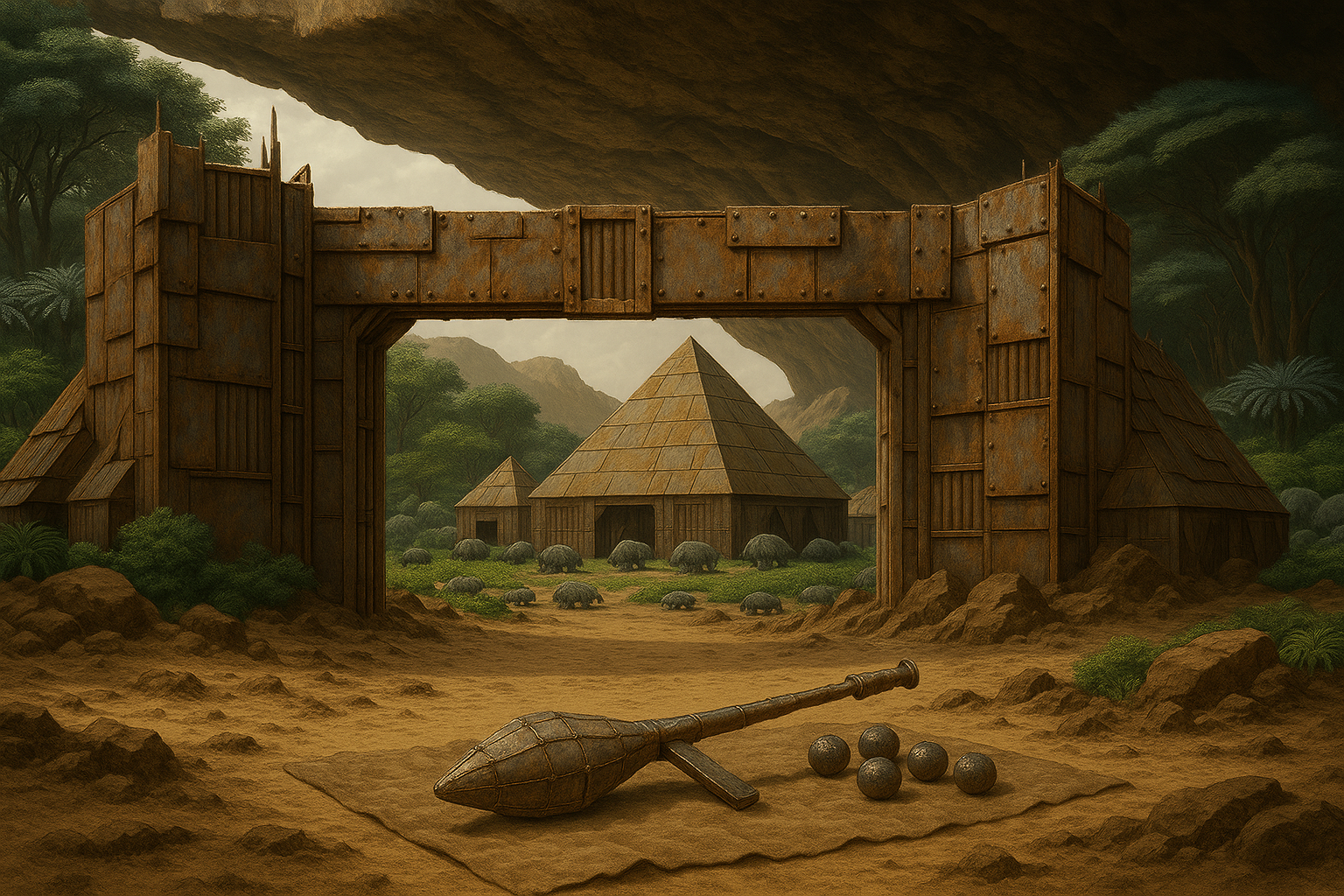Vaskol
"One day, the Martian Fleet will knock on the door of the Bogler Homeworld. Then we'll give them the choice."
The Ravaged Forge: Environment of Eta Corvi III
The Bogler homeworld, colloquially known as Eta Corvi III or Vaskol by xenobiologists, is a superterrestrial planet forged in chaos. Significantly larger than Earth and subjected to constant cosmic violence, Vaskol is a world scarred by frequent impact events and shaped by the relentless cycle of biannual Dust Storm Seasons. Twice per orbital year, the planet passes through the inner debris belt of Eta Corvi, plunging the surface into weeks of devastation. Silica-rich micro-asteroids and larger impactors bombard the landscape, igniting massive airbursts and turning the skies into churning clouds of glowing toxic smog. This relentless erosion has stripped the outer crust to reveal vast fields of exposed metallic substrate, broken only by crater-pocked basins and shifting silica deserts. During non-storm periods, a healthy if precarious water cycle resumes, sustained by subterranean bacteria that extract moisture from the air and feed the planet’s weather systems via a vast high-pressure subcrustal ocean.
Oasis Cradles and Subsurface Arteries
Life on Vaskol persists in scattered, protected oases, ecological refugia nestled under reinforced overhangs or within deep pits where the storms cannot reach. These oases vary in Size from cave puddles to inland seas, each supporting a tight-knit and brutally efficient food web. With real estate limited and environments isolated, biodiversity is low but specialized. A handful of resilient plant species support singular herbivore and apex predator niches, while pale, blind aquatic creatures circulate between oases and the boiling-hot subterranean ocean through a network of lava tubes and blue holes. These same lava tubes serve as arteries for Bogler travel, commerce, and war, as tectonic activity cycles molten metals in and out of the surface. The planet’s high gravity discourages flight, relegating most airborne life to clumsy gliders or leaping predators. Evolution here favors compact strength, heat resistance, and a short, brutal life cycle—Attributes mirrored by the Boglers themselves.
Cities of Steel and Plunder
Bogler society is not built upon cultivation or construction, but on predation and pillage. With little capacity for agriculture—thanks to the fragility of their ecosystems and the unpredictability of their environment—the Boglers evolved as apex hunter-raiders. Their settlements, more fortress than city, guard access to essential oases and material caches, including scavenged metals used to forge weapons, armor, and raiding gear. These cities are in a constant state of war-readiness, with supply lines funneled through lava tubes and guarded outposts. Rather than expanding through colonization or diplomacy, the Boglers grow their influence through territorial raids, targeting rival strongholds for game, tools, and surviving captives. Large-scale mining and agriculture are virtually unknown—survival is measured in successful plunders, not harvests. To be Bogler is to thrive in ruin, to dominate in scarcity, and to live always one storm away from extinction.








Comments